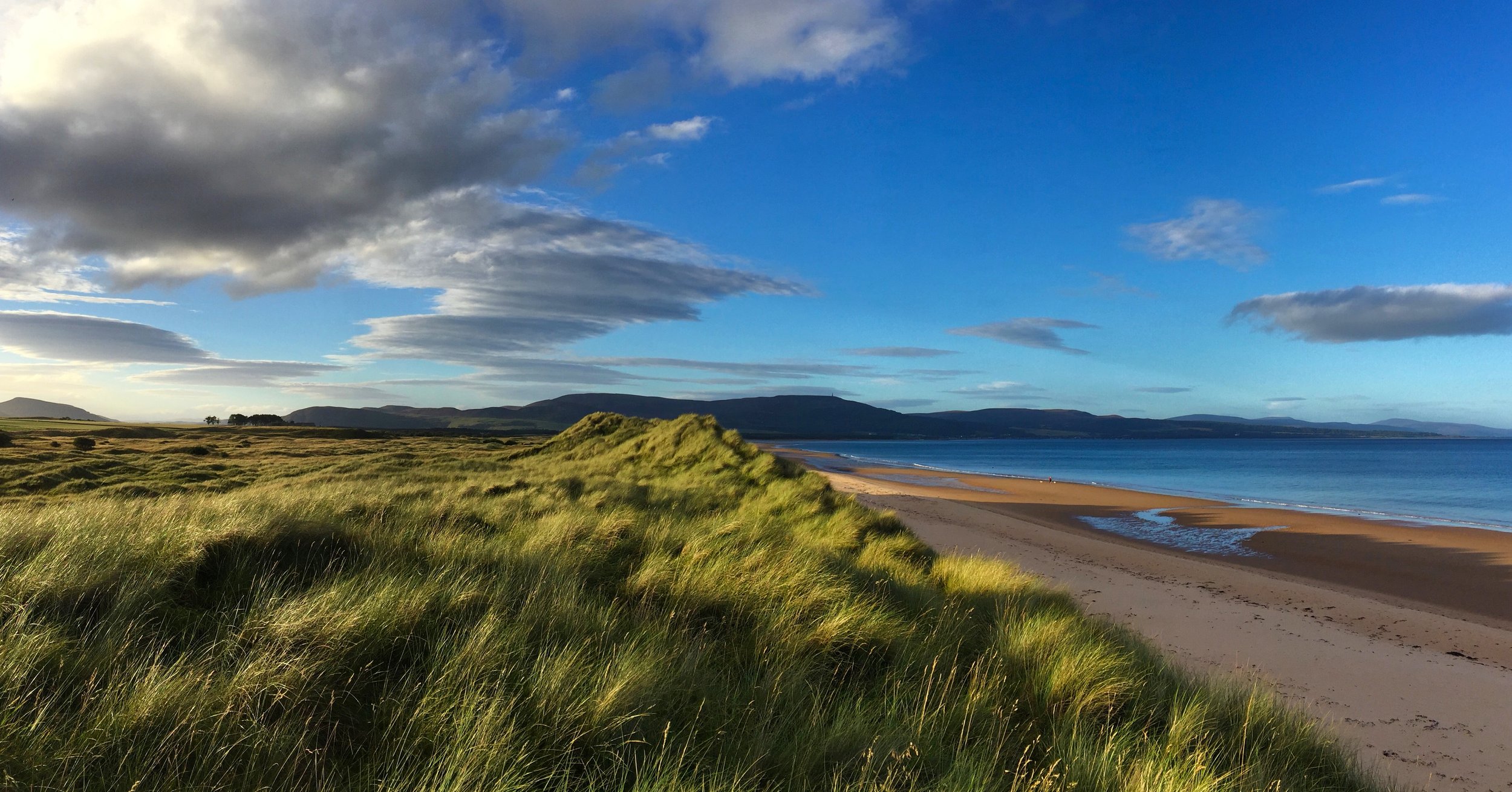Pic - Alasdair Dickson
Even those with a passing interest in Scottish golf have probably heard about the project to build a new golf course at Coul Links, close to Royal Dornoch. The project is a bold one, to take a piece of neglected land, rife with invasive vegetation, and restore the duneland at the same time as creating a golf course to match the very best in the world.
While many in the golf world, and the local community, are keen to see the course built, the project has been dogged with controversy.
In 2020 the local authorities approved the development of Coul Links, but the Scottish government blocked the project from going ahead. There is no doubt that the development of Trump International, north of Aberdeen was at the front of many minds at the time and that did nothing to help the plan get approval. There was a narrative that Scotland didn’t want ‘Americans coming over here and ruining our dunes’ but the story is far more complex than that.
The land at Coul is magnificent, but the Comnunities for Coul movement, behind the new bid, say it has been neglected. They believe that over recent years it has become overgrown with invasive species. The botanist, Dr Andy McCullen, is a supporter of the Coul Links plan. He says, ‘“The vegetation of the dune slacks is now mostly indistinct from roadside ditches and the dune heath is turning into nondescript scrub. Soon there will be nothing much left worth preserving”.
These site plans shows the current state if the SSSI
It may be a Site of Special Scientific Interest (SSSI) but there hasn’t been a lot of interest taken in the area to date. NatureScot have an objective of improving the condition of the sand dune habitat but they don’t have the resources to do that, and the spread of invasive species is increasing
The developers believe that Coul Links will dramatically improve the area and that they will invest to do that in a way NatureScot haven’t.
Chris Haspell, a man with experience in developing environmentally responsible golf courses, has been working with the Coul team to develop the plans. He says, ‘I wouldn’t get involved in a project I wouldn’t believe in - I really do believe in this project. Coul Links has invasive species and overfixaton of the grass land. Even in 2007 it looked different. Things are currently only going one way’.
He goes on, ‘We need to do very little to build the golf course here. We need to just mow out the fairways, the tees and greens will take minimal work to construct. Twelve of the greens don’t need more than a sandpro. The other 6 need minimal intervention - just a little bit of sand movement’.
The industry has a good heritage now in improving areas of SSSI.
Take Royal St George’s for example. In 2011 the SSSI was considered ‘unfavourable’ status. Head greenkeeper Paul Larsen led a programme of development which meant that the SSSI was dramatically improved to favourable status. “The rank, thick grass was rubbish for golf, because you’d lose your ball and take 10 hours to get around, but also for wildlife. Birds like skylarks nest in the grass, and when you start making rank vegetation they can’t do that. What people forget is we’re a dunelands.”
Haspell has a similar vision for what they can create at Coul. By removing invasive species, he says they can create an environment for nature to thrive.
They have modified their plans from the last submission to push this even further. Haspell explains, ‘The fairways were one piece last time - we have broken them up and will have sand waste areas which will almost be Pine Valley-esque in appearance. We’ve introduced that to get connectivity to get different roughs which will encourage invertebrates, lichens and butterflies’.
NatureScot and the Save Coul Links Conservation Coalition continue to object to the plans and have said that they believe the impact of the dunes is more signficant than the Coul team have calculated.
This is a claim which the Coul Links team dispute, they say ‘None of the members of this inappropriately named group (led by RSPB plus Buglife, Butterfly Conservation Scotland, Marine Conservation Society, National Trust for Scotland, Plantlife and the Scottish Wildlife Trust) have ever professionally surveyed Coul Links and only RSPB can evidence even having visited the site – having done so twice at C4C’s invitation.’
There is no doubting the passion of the team behind Coul, and they have local support too. In a recent local ballot almost 70% of those who voted came out in support of the plan and the Highland Council’s planning committee approved the project.
The economic case for the local community is compelling. Today, many groups of golfers use Inverness as a base for a visit to Royal Dornoch and come in and out for a day. The addition of Coul Links will mean this will become a destination in itself for more golfers, that will also lead to more visits to the likes of Brora, Golspie and Tain. The Coul Links project believe it could bring 400 jobs to the area.
The legacy of Trump still hangs over the development. But those who have worked with Mike Keiser and Bill Coore before are adamant that the only thing this has in common with the Aberdeen project is the nationality of the developers. They believe they can dramatically improve the environmental well-being of the site at the same time as delivering economic benefit and a world class course.
The Scottish government are reviewing the plans and are due to opine soon as to whether the project can go ahead.
If it gets the go-ahead the Coul team are confident they can bring golf to the course within a relatively short time, such is the nature of the development required.
But whether they get their wish is out of their hands. It’s over to the politicians in Holyrood now to decide the fate of the golf course, and of the local community.



